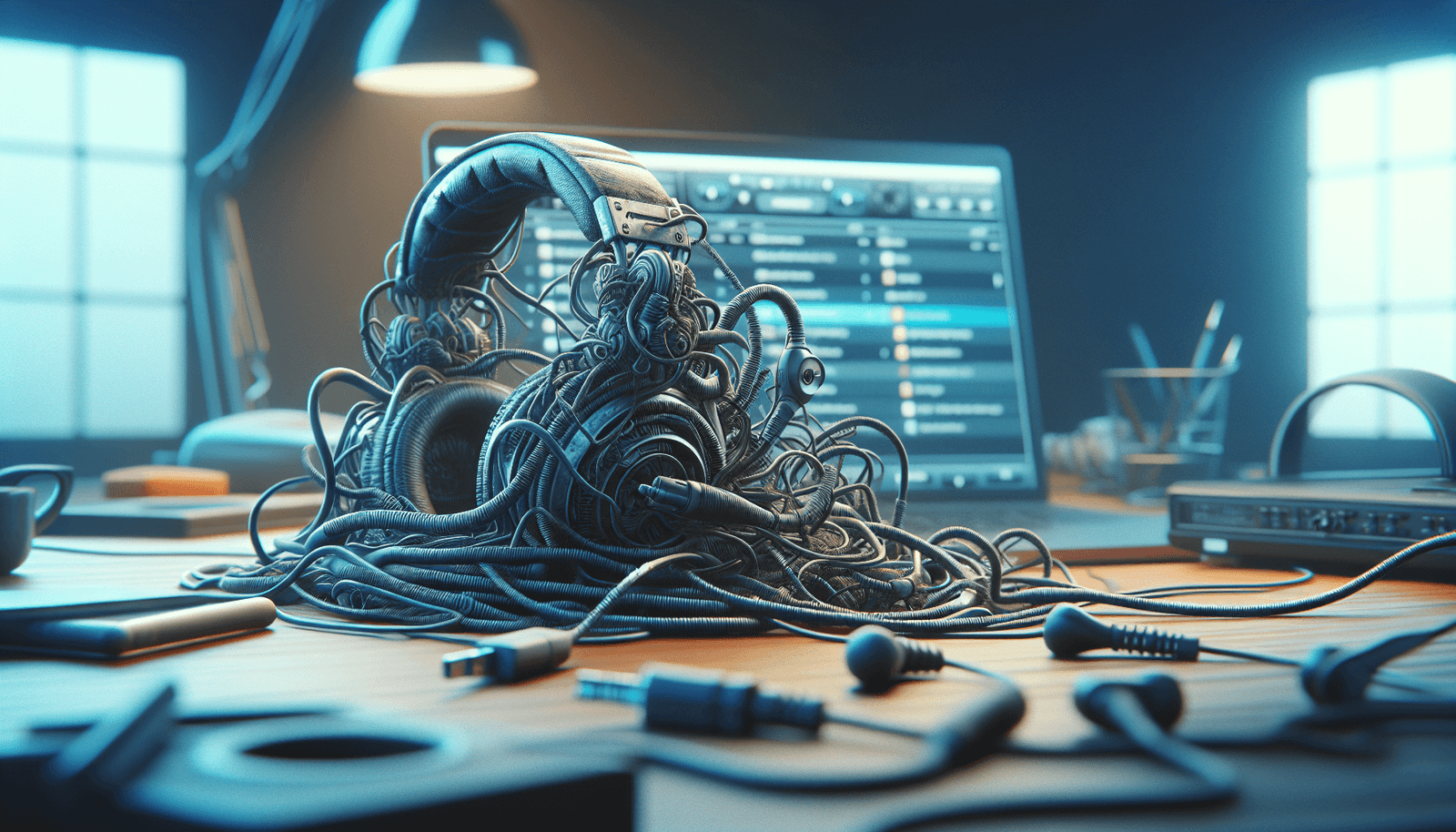Have you ever been in the middle of a StreamYard broadcast, only to find out that your audience can’t hear you? You’re not alone. Audio issues in live streaming can be frustrating and disruptive, especially when you are trying to engage with your viewers or host a professional event.
StreamYard is a popular live streaming platform known for its ease of use and professional capabilities. However, like any technology, it isn’t immune to encountering occasional hiccups—particularly with audio. Understanding these issues, what causes them, and how you can solve them swiftly will save you from much embarrassment and maintain your broadcast credibility.

Understanding StreamYard and Its Audio Capabilities
StreamYard is highly favored due to its browser-based functionality, which allows you to stream directly without downloading any software. Its advantages include multi-platform streaming and ease of use, making it ideal for webinars, podcasts, interviews, and more.
Key Audio Features of StreamYard
Understanding its features can help diagnose and solve issues when they arise:
Echo Cancellation: StreamYard has built-in echo cancellation for clearer audio, especially important when using open microphones or in locations with background noise.
Audio Sharing: Allows you to share audio from your computer, which is useful for presentations or playing background music.
Individual Audio Controls: The ability to mute/unmute themselves gives control back to the host and guests, preventing unexpected background noise.
Guest Audio Settings: Hosts can manage guest audio settings, ensuring consistent quality across the board.
Yet, even with these features, problems can occur. Understanding them is the first step towards prevention and resolution.
Common Audio Issues on StreamYard
Audio problems can manifest differently, from your audience not hearing anything to significant delays or poor quality. Each issue has its own set of typical causes and solutions.
No Sound from the Host or Guest
Sometimes, streams go silent without warning. This can be due to:
- Microphone not selected: Ensure the correct microphone is selected in the StreamYard settings.
- Permissions not granted: If you’re using a new browser or device, microphone permissions might not be enabled.
- Hardware issues: A faulty microphone or connection often causes silence.
- Browser issues: It’s worthwhile checking if your browser is the culprit, as some might not be updated or compatible.
Poor Audio Quality
Sound quality issues can turn viewers away faster than you might expect. Poor audio is often due to:
- Bad internet connection: An unstable or slow internet connection can distort audio quality.
- Background noise: Not using headphones or being in a noisy environment introduces unwanted sounds.
- Low microphone quality: Cheaper microphones can result in subpar audio.
- Interference: If you’re picking up stray signals, your device might be too close to another electronic device.
Echo and Feedback Noise
Echo or feedback can quickly derail a stream. Causes can include:
- Internal speakers picking up sound: Without headphones, your speakers might bounce your stream back to the microphone.
- Multiple devices in proximity: Devices with active microphones and speakers too close together.
- Room acoustics: Large, empty rooms can naturally cause echoes.
Audio and Video Sync Issues
When audio doesn’t match the video, it throws everyone off. This misalignment could be the result of:
- Latency issues: High latency in transmission can delay audio or video.
- Device performance: Slower devices may struggle to keep up with real-time encoding.

Troubleshooting StreamYard Audio Issues
With the potential problems identified, let’s discuss practical solutions you can implement to avoid or fix these issues during your StreamYard streams.
Check Your Audio Equipment
Begin by verifying that your equipment functions as it should. Simple steps include:
- Test your microphone and headphones: Use built-in tests in your device’s sound settings.
- Connections and cables: Physically check cables for damage or loose connections.
- Hardware reset: A quick restart of your audio input devices can often clear unforeseen issues.
Optimize Audio Settings in StreamYard
Navigate through StreamYard’s audio settings:
- Correct microphone selection: Ensure the right one is picked across all settings menus.
- Input and output volume levels: Properly define your volume levels to avoid distortion.
- Audio processing options: Utilize built-in tools such as echo cancellation and noise suppression.
Improve Environmental Factors
Your setting matters as much as your equipment:
- Quiet environment: Always aim to stream from areas with minimal background noise.
- Use headphones: Prevent echo and feedback loops by opting for a good quality pair.
Check Your Internet Connection
Reliable internet is indispensable for streaming. Consider:
- Testing your speed: Check upload and download speeds to ensure they meet requirements.
- Wired connections: When possible, use ethernet over Wi-Fi for more reliable service.
Update Your Software and Browser
Software vulnerabilities often lead to bugs:
- Browser updates: Ensure your browser is the latest version.
- Device drivers: Update all drivers linked to your audio devices.
Perform a Troubleshooting Session
Prior to going live, conducting a technical run-through can avert disasters:
- Pre-broadcast check: Gather hosts and/or guests for a short test stream.
- Listen back: Recording a snippet and playing it back ensures quality control.
- Adjust real-time: Make necessary modifications as they pop up in these trials.
Advanced Solutions for Persistent Audio Issues
If basic troubleshooting methods aren’t resolving your issues, deeper measures may be necessary.
External Audio Interfaces
Consider adopting an audio interface to bridge between professional audio gear and StreamYard. This can substantially improve quality and consistency.
Dedicated Streaming Software
Though StreamYard is user-friendly, integrating with dedicated streaming tools like OBS Studio can provide additional layers of control and customization.
Professional Audio Consultation
Sometimes, expert insights are necessary to diagnose hardware faults or setup inefficiencies. Pros can provide tailor-made advice or solutions, especially in complex setups.
Maintaining Audio Quality Post-Broadcast
Consistently high audio quality can elevate your broadcasts, building viewer trust and engagement over time.
Regular Equipment Maintenance
Routinely check and clean your audio equipment. Regular upkeep prolongs lifespan and enhances performance.
Community Feedback
Engage with your audience regularly to gather feedback on audio quality. They might point out inconsistencies or issues you hadn’t noticed.
Continuous Learning
The tech landscape shifts rapidly. Staying abreast of updates in audio technology and StreamYard features ensures you’re always delivering the best possible stream.
Conclusion
StreamYard offers an incredibly powerful platform for live streaming, yet like all technologies, it can face challenges like audio issues. The key lies in understanding potential problems and having a clear action plan for troubleshooting. By knowing your equipment, testing processes, and the platform thoroughly, you can mitigate mishaps and maintain a professional streaming experience. No audience should endure a silent broadcast or audio chaos—helping you to shine as the charismatic host you are. Enjoy your streaming with uninterrupted and clear sound!

